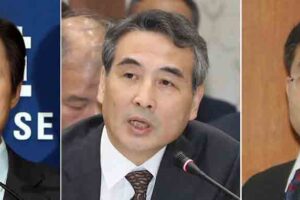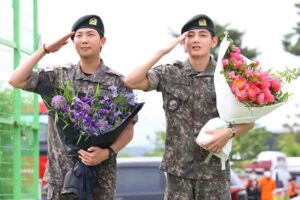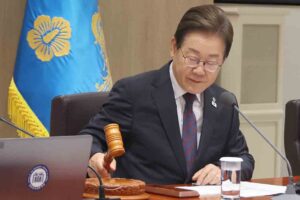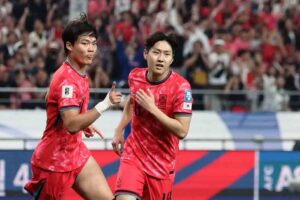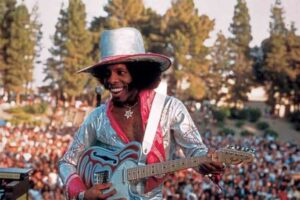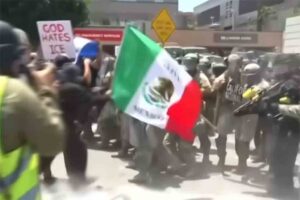"The Execution of Stevens: The First ‘Armed Resistance’ Against Japanese Invasion and Its Historical Significance"
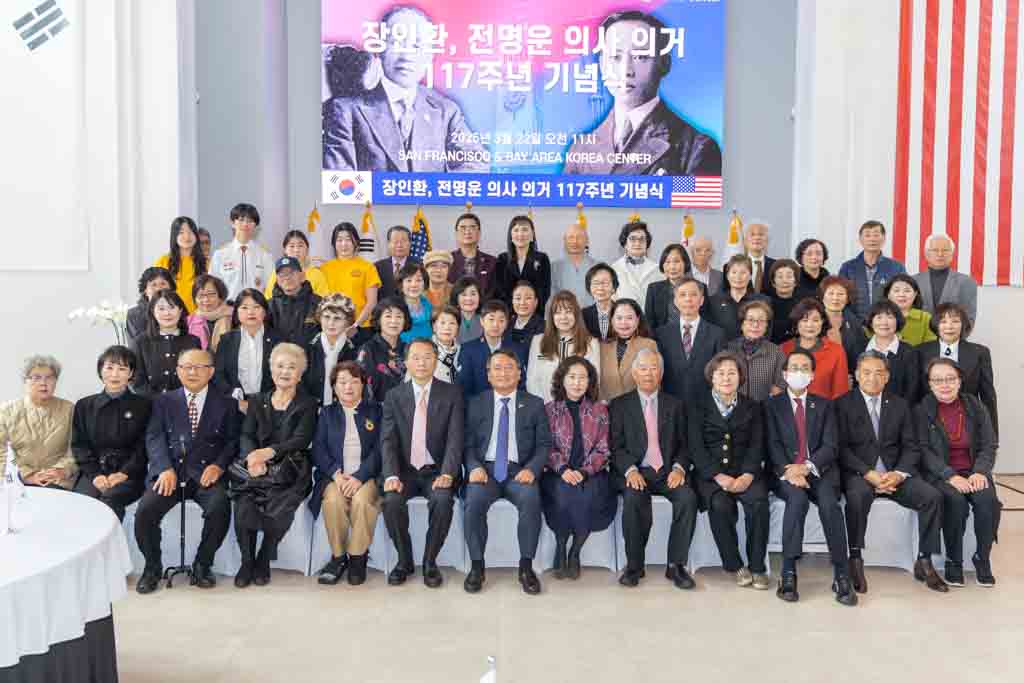
San Francisco, a sacred site of the Korean independence movement and a cornerstone of Korean-American immigration history, recently hosted a significant event honoring the patriotic sacrifices of early Korean immigrants and fostering unity within the Korean community. The event marked the 117th anniversary of the historic act by Jang In-hwan(장인환) and Jeon Myeong-un(전명운).
Held on March 22 at the San Francisco & Bay Area Korea Center(SFBAKC), the commemoration gathered over 100 Korean community members, including prominent leaders such as SFBAKC president Jonathan H. Kim(김한일). Attendees reflected on the two patriots’ heroic actions that ignited a series of armed resistance movements against Japanese imperial rule.
President Kim emphasized the historical significance of Jang and Jeon’s act, highlighting its direct influence on An Jung-geun’s assassination of Ito Hirobumi nearly 19 months later. He noted, “The assassination of Durham Stevens by Jang In-hwan and Jeon Myeong-un served as a pivotal moment that ultimately led to An Jung-geun’s action at Harbin Station. After Stevens was executed, Jeon Myeong-un was acquitted and later traveled to Vladivostok, where he met An Jung-geun(안중근).”
Kim’s remarks were supported by a 400-page Japanese diplomatic document disclosed by the Korean Ministry of Patriots and Veterans Affairs in 1994. This document revealed that Japanese authorities closely tracked Jeon’s movements from San Francisco to Vladivostok, even considering plans to assassinate him. The records further confirmed that Jeon and An Jung-geun resided at the same address in Vladivostok, underscoring the deep connections among independence fighters.
“San Francisco is not only where the Korean independence movement began, but it is also the birthplace of Korea’s armed resistance against Japanese occupation,” Kim stated. “As descendants of these pioneers, we must honor their patriotic spirit by fostering unity and working towards the prosperity of both our homeland and the Korean-American community.”
Kim also highlighted the significance of this year’s 80th anniversary of Korea’s liberation. “Let’s make this year’s Liberation Day a grand festival that honors our ancestors’ sacrifices and educates future generations about their legacy,” he urged.
Jane Yoon(윤행자), president of the Heritage of Korean Independence, SF chapter, echoed these sentiments. She emphasized that the actions of Jang and Jeon altered global perceptions of Korea and catalyzed the formation of the Korean National Association(대한인국민회), a crucial organization that unified Korean immigrants in their fight for independence.
“By reflecting on Jang and Jeon’s bravery, we should reaffirm our identity and our commitment to Korea,” Yoon said. “We must instill a proper understanding of history and national security among younger generations. Although divisions exist within the Korean-American community, we should embrace our strengths, listen to differing perspectives, and unite to create a more cohesive society.”
Pyo Han-kyu(표한규), son-in-law of Jeon Myeong-un, also delivered a speech emphasizing the historical importance of the two patriots’ actions. “The assassination of Durham Stevens was the first act of armed resistance, demonstrating that Koreans were willing to fight for their nation. When we unite, our collective strength grows exponentially,” he remarked.
He further highlighted the role of the Korean National Association, established during the campaign to defend Jang and Jeon, in protecting the rights of Korean immigrants. “Before this, key independence organizations such as the United Korean Association(공립협회), the Daedong Bogukhoe(대동보국회), and the Heungsadan(흥사단) all originated in San Francisco. This city is truly the birthplace and epicenter of the Korean independence movement.”
Jang In-hwan and Jeon Myeong-un took decisive action on March 23, 1908, when they assassinated Durham Stevens at the Ferry Building in San Francisco. Stevens, a Japanese-appointed foreign advisor to the Korean government, had publicly stated that Japanese rule was beneficial to Korea and welcomed by Koreans. Angered by his remarks, Korean activists confronted him at the Fairmont Hotel on March 22, but Stevens remained defiant. The following day, as Stevens attempted to leave San Francisco, Jang and Jeon shot him, and he succumbed to his wounds on March 25.
Prior to the commemoration ceremony, attendees watched a video titled “We Are the 21st Century Jang In-hwan and Jeon Myeong-un,” produced by the cyber diplomacy organization VANK. Following the ceremony, a special screening of “A Billionaire’s Independence Movement,” a documentary about Yoo Il-han(유일한)—a businessman who contributed to both Korea’s independence movement and pharmaceutical industry—was held. The Korean American Community Center of the Bay Area plans to continue screening independence movement-themed films through August 15 in honor of the 80th anniversary of Korea’s liberation.
This event served as a powerful reminder of the sacrifices made by early Korean immigrants and the enduring spirit of unity and patriotism within the Korean-American community.
Held on March 22 at the San Francisco & Bay Area Korea Center(SFBAKC), the commemoration gathered over 100 Korean community members, including prominent leaders such as SFBAKC president Jonathan H. Kim(김한일). Attendees reflected on the two patriots’ heroic actions that ignited a series of armed resistance movements against Japanese imperial rule.
President Kim emphasized the historical significance of Jang and Jeon’s act, highlighting its direct influence on An Jung-geun’s assassination of Ito Hirobumi nearly 19 months later. He noted, “The assassination of Durham Stevens by Jang In-hwan and Jeon Myeong-un served as a pivotal moment that ultimately led to An Jung-geun’s action at Harbin Station. After Stevens was executed, Jeon Myeong-un was acquitted and later traveled to Vladivostok, where he met An Jung-geun(안중근).”
Kim’s remarks were supported by a 400-page Japanese diplomatic document disclosed by the Korean Ministry of Patriots and Veterans Affairs in 1994. This document revealed that Japanese authorities closely tracked Jeon’s movements from San Francisco to Vladivostok, even considering plans to assassinate him. The records further confirmed that Jeon and An Jung-geun resided at the same address in Vladivostok, underscoring the deep connections among independence fighters.
“San Francisco is not only where the Korean independence movement began, but it is also the birthplace of Korea’s armed resistance against Japanese occupation,” Kim stated. “As descendants of these pioneers, we must honor their patriotic spirit by fostering unity and working towards the prosperity of both our homeland and the Korean-American community.”
Kim also highlighted the significance of this year’s 80th anniversary of Korea’s liberation. “Let’s make this year’s Liberation Day a grand festival that honors our ancestors’ sacrifices and educates future generations about their legacy,” he urged.
Jane Yoon(윤행자), president of the Heritage of Korean Independence, SF chapter, echoed these sentiments. She emphasized that the actions of Jang and Jeon altered global perceptions of Korea and catalyzed the formation of the Korean National Association(대한인국민회), a crucial organization that unified Korean immigrants in their fight for independence.
“By reflecting on Jang and Jeon’s bravery, we should reaffirm our identity and our commitment to Korea,” Yoon said. “We must instill a proper understanding of history and national security among younger generations. Although divisions exist within the Korean-American community, we should embrace our strengths, listen to differing perspectives, and unite to create a more cohesive society.”
Pyo Han-kyu(표한규), son-in-law of Jeon Myeong-un, also delivered a speech emphasizing the historical importance of the two patriots’ actions. “The assassination of Durham Stevens was the first act of armed resistance, demonstrating that Koreans were willing to fight for their nation. When we unite, our collective strength grows exponentially,” he remarked.
He further highlighted the role of the Korean National Association, established during the campaign to defend Jang and Jeon, in protecting the rights of Korean immigrants. “Before this, key independence organizations such as the United Korean Association(공립협회), the Daedong Bogukhoe(대동보국회), and the Heungsadan(흥사단) all originated in San Francisco. This city is truly the birthplace and epicenter of the Korean independence movement.”
Jang In-hwan and Jeon Myeong-un took decisive action on March 23, 1908, when they assassinated Durham Stevens at the Ferry Building in San Francisco. Stevens, a Japanese-appointed foreign advisor to the Korean government, had publicly stated that Japanese rule was beneficial to Korea and welcomed by Koreans. Angered by his remarks, Korean activists confronted him at the Fairmont Hotel on March 22, but Stevens remained defiant. The following day, as Stevens attempted to leave San Francisco, Jang and Jeon shot him, and he succumbed to his wounds on March 25.
Prior to the commemoration ceremony, attendees watched a video titled “We Are the 21st Century Jang In-hwan and Jeon Myeong-un,” produced by the cyber diplomacy organization VANK. Following the ceremony, a special screening of “A Billionaire’s Independence Movement,” a documentary about Yoo Il-han(유일한)—a businessman who contributed to both Korea’s independence movement and pharmaceutical industry—was held. The Korean American Community Center of the Bay Area plans to continue screening independence movement-themed films through August 15 in honor of the 80th anniversary of Korea’s liberation.
This event served as a powerful reminder of the sacrifices made by early Korean immigrants and the enduring spirit of unity and patriotism within the Korean-American community.





